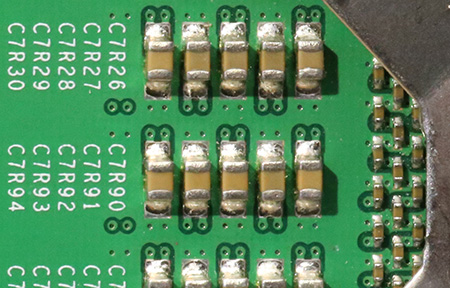EMC Question of the Week: November 2, 2020

A 10-cm x 10-cm printed circuit board has one high-speed switching device and closely spaced (<0.3 mm) power and ground planes. For optimum decoupling, the decoupling capacitors
- should share the power via with the active device
- should be located within 3 cm of the active device
- both (a.) and (b.)
- may be located anywhere with a low-inductance connection
Answer
The best answer is "d". Connection inductance is the key parameter to minimize when placing decoupling capacitors on boards with closely-spaced power and ground planes. Attempting to share a power via, or moving a capacitor too close to the pin field of an active device is likely to increase the connection inductance. On the other hand, the distance between the device and the decoupling capacitor has almost no impact on the connection inductance.
Some people would argue that the time required for the charge to move between the capacitor and the active device dictates that capacitors be located very close to the device they are decoupling. But for reasonably sized boards with typical surface mount decoupling capacitors, this argument doesn't hold up. For example, the inter-plane capacitance of a 10-cm x 10-cm board with 0.3-mm spaced power and ground planes and an FR-4 dielectric supplies 1.3 nC of charge (1-volt delta V) in the first 700 psec of a transition. A very well-connected capacitor with a 1-nH connection inductance (located 0 cm from the device) supplies less than 250 pC of charge in the same time. Initially, the planes supply most of the charge. Eventually, the SMT capacitors supply more charge than the planes, but the capacitors very close to the active device do not supply significantly more charge than others that are more distant.
Of course, it is dangerous to rely on simple rules for decoupling without understanding the physics behind them. There are certain situations where the locations of decoupling capacitors can be important on boards with closely spaced planes (though closer is not necessarily better). Also, when the power and ground planes are not closely spaced, it is best to rely on "local" decoupling capacitors. In this case the location is extremely important. For more information check out the Circuit Board Decoupling Information on this website.
Have a comment or question regarding this solution? We'd like to hear from you. Email us at
